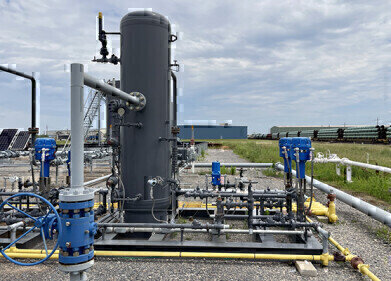Air Clean Up
Port of Los Angeles Prepares to Meet Alternative Marine Power Demands
Jan 09 2014
With more berths for ships to plug into shore-side electric power, or Alternative Maritime Power (AMP), than any other port in the world, the Port of Los Angeles is fully ready for its terminal operators and ocean carriers to meet California’s new clean air requirements.
“The Port developed and invested heavily in AMP ahead of the regulations to bring the tremendous environmental benefits of shore-side power to our region,” said Gary Lee Moore, Interim Executive Director of the Port of Los Angeles. “A great deal of credit goes to our industry and regulatory partners for working closely with us over the past decade to put us into the position we are today in terms of our shore-side power deployment capacities.”
Effective January 1, 2014, a new California regulation has set shore-side power plug in requirements for container and refrigerated ship fleets, as well as cruise ships. Under the regulation, at least fifty percent of fleet vessel calls must shut down their auxiliary engines and run their vital onboard systems by plugging into shore-side power. The regulation also requires that each fleet reduce its total at-berth emissions generation by at least fifty percent. These requirements will reach eighty percent by 2020.
At the Port of Los Angeles, ships equipped to connect to AMP can now do so at all eight marine container terminals and the Port’s World Cruise Center. Approximately $180 million has been invested over the last decade to equip 25 container and cruise berths with AMP shore-side power infrastructure.
Shipping lines, whose compliance is crucial to securing these air quality benefits, also have invested substantial resources to ensure the regulatory program succeeds. The Pacific Merchant Shipping Association (PMSA), which represents terminal operators and ocean carriers that move cargo through the West Coast ports, estimates the cost of retrofitting a ship to plug into shore-side power can range from $500,000 to $1.5 million, depending on the vessel.
“Programs like this demonstrate the maritime industry’s ongoing commitment to the San Pedro Bay Ports Clean Air Action Plan and responsible environmental practices worldwide,” said T.L. Garrett, Vice President of the PMSA. “This is an extraordinary tale of an industry that has literally turned itself around in less than a decade. No industry has adopted real reforms as quickly as this one to promote a healthier environment.”
Events
Apr 22 2024 Hannover, Germany
Apr 23 2024 Kuala Lumpur, Malaysia
Apr 24 2024 Sao Paulo, Brasil
May 05 2024 Seville, Spain
May 13 2024 Munich, Germany














